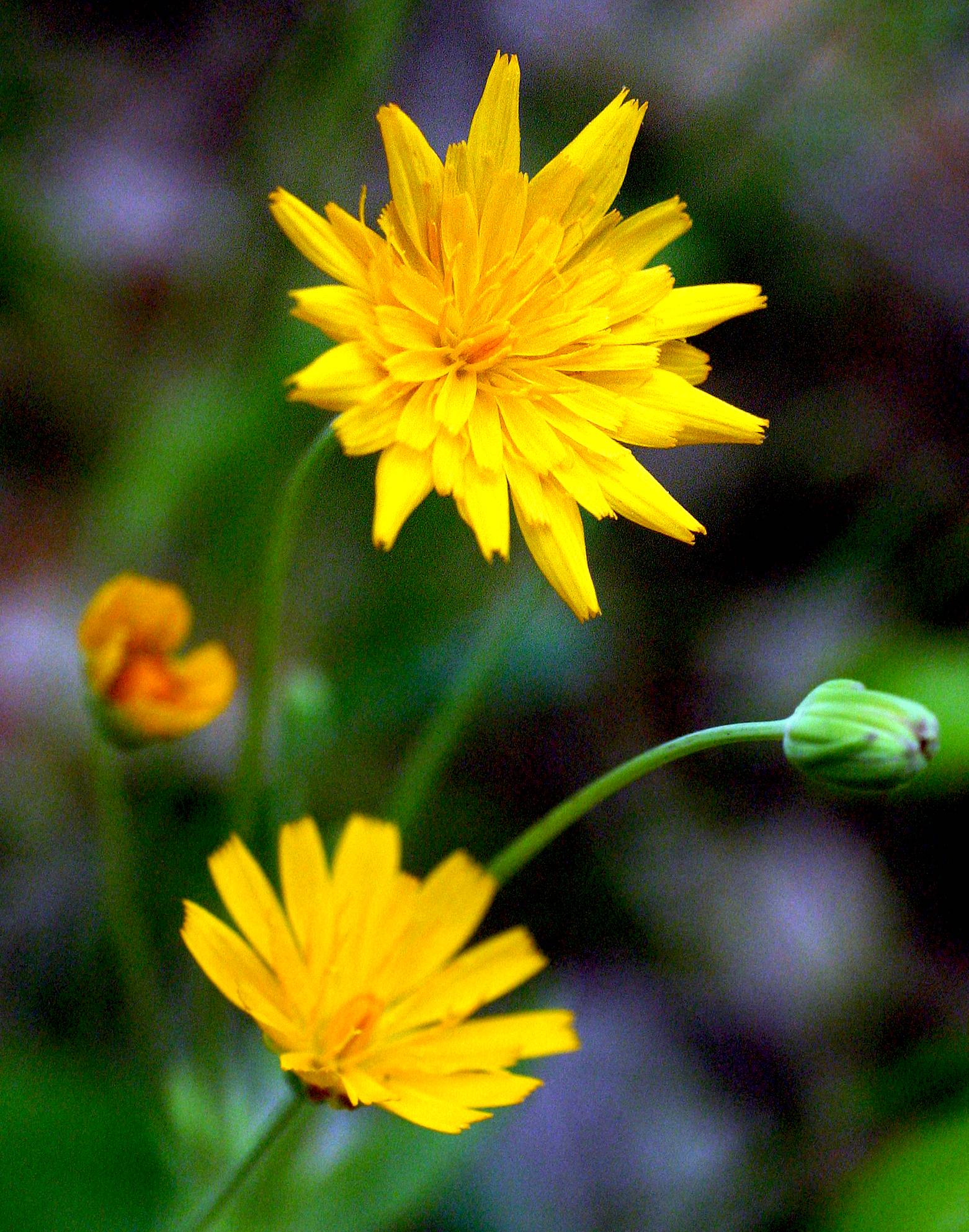
|
Family: Asteraceae |
Annuals or perennials, 3-75 cm; taprooted, fibrous-rooted, or (in K. dandelion) with rhizomes bearing globose tubers. Stems 1-50+, usually erect, rarely decumbent, scapiform or branched distally, glabrous or sparingly villous (proximally). glandular-villous (especially distally). Leaves mostly basal, sometimes cauline; petiolate (petioles often winged); blades linear to lanceolate, oblanceolate, or spatulate, margins entire, denticulate, or irregularly pinnately lobed, apices acute to obtuse (faces glabrous or glandular-villous, usually glaucous in K. dandelion and K. biflora); distal cauline usually slightly reduced to bractlike. Heads borne singly. Peduncles not distally inflated, ebracteate (from rosettes and from axils of cauline leaves or bracts). Calyculi 0. Involucres turbinate to campanulate, 2-12 mm diam. Phyllaries (4-)5-18 in 1-2 series, (sometimes reflexed in fruit) linear-lanceolate to ovate, equal, herbaceous, apices acute (faces glabrous). Receptacles flat or low-convex, pitted. glabrous, epaleate. Florets 5-60; corollas yellow to orange (equaling or surpassing phyllaries). Cypselae brown or reddish brown, columnar, obconic, barrel-shaped, or fusiform, not beaked, nerves or ribs 10-20, glabrous ; pappi 0, or persistent, often fragile, usually in 2 series, distinct, outer of 5+, yellowish or brownish scales, inner of 5-45, barbellulate bristles (pappi 0 in K. cespitosa, 0 or 1 series of tiny scales in K. wrightii). x = (4) 5 (6, 9). Krigia is diverse and limited to North America. On molecular evidence, it stands apart from other clades of Cichorieae and is best placed as a monotypic subtribe (J. Lee et al. 2003; Lee and B. G. Baldwin 2004). Early studies classified the pappose and epappose species as different genera. A unified view of the genus was taken by L. H. Shinners (1947), and this has been supported by recent morphologic and molecular studies (K. J. Kim and T. J. Mabry 1991; Kim and B. L. Turner 1992; Kim et al. 1992b, 1992c; Kim and R. K. Jansen 1994). The most common base number is x = 5, with lower and higher numbers having arisen through dysploidy, autoploidy, and both ancient and recent alloploidy (K. L. Chambers 1965, 2004; A. S. Tomb et al. 1978; C. C. Chinnappa 1981; Kim and Turner).
Fls all ligulate and perfect, yellow or orange; invol campanulate, with 5-18 essentially equal bracts, not calyculate; achenes oblong or turbinate, 10-20-nerved or -ribbed, tending to be transversely rugulose; pappus of 5+ prominent to sometimes very inconspicuous scales and usually 5-40 longer bristles, or obsolete; lactiferous herbs, commonly with some spreading, gland-tipped hairs at least under the heads; lvs alternate, subopposite, or all basal, entire to pinnatifid; heads 1-several, mostly long-pedunculate. 7, N. Amer. Gleason, Henry A. & Cronquist, Arthur J. 1991. Manual of vascular plants of northeastern United States and adjacent Canada. lxxv + 910 pp. ©The New York Botanical Garden. All rights reserved. Used by permission. |
This project was made possible in part by the Institute of Museum and Library Services [MG-70-19-0057-19].
Powered by Symbiota



